Coral injury. Coral Cuts: First Aid, Treatment, Symptoms, and Healing Time for Marine Injuries
What are the symptoms of coral cuts. How to provide first aid for coral injuries. What is the typical healing time for coral cuts. What treatments are recommended for coral-related wounds. How to prevent infections from marine injuries.
Understanding Coral Cuts: Causes and Initial Symptoms
Coral cuts occur when a person’s skin comes into contact with sharp coral formations, often during water activities like snorkeling or diving. These injuries can range from minor scrapes to more severe lacerations, depending on the type of coral and the force of impact.
Initial symptoms of coral cuts typically include:
- Localized pain and stinging sensation
- Visible abrasion or cut on the skin
- Redness and swelling around the affected area
- Slight bleeding or oozing from the wound
- Potential itching or burning sensation
Why do coral cuts often lead to more severe reactions than typical scrapes? Coral structures contain calcium carbonate and potentially harmful microorganisms that can enter the wound, causing irritation and increasing the risk of infection.

Immediate First Aid for Coral Injuries
When dealing with a coral cut, prompt and proper first aid is crucial to minimize complications and promote healing. Here are the essential steps to follow:
- Exit the water and find a safe, clean area to assess the injury
- Rinse the wound thoroughly with clean fresh water to remove debris and coral particles
- Gently clean the area with mild soap if available
- Apply gentle pressure to stop any bleeding
- Remove any visible coral fragments with clean tweezers
- Apply an antiseptic solution or antibiotic ointment to the wound
- Cover the injury with a sterile bandage or dressing
Is vinegar effective for treating coral cuts? While vinegar is often recommended for jellyfish stings, it is not typically advised for coral injuries. Stick to fresh water and mild soap for cleaning coral cuts.
Recognizing Signs of Infection in Coral-Related Wounds
Coral cuts are prone to infection due to the marine environment and potential introduction of harmful bacteria. It’s crucial to monitor the wound for signs of infection, which may include:

- Increased pain, redness, or swelling around the wound
- Warmth or heat emanating from the affected area
- Pus or unusual discharge from the cut
- Red streaks extending from the wound
- Fever or chills
- Swollen lymph nodes near the injury site
How quickly can a coral cut become infected? Infections can develop within 24 to 48 hours after the injury, making it essential to monitor the wound closely and seek medical attention if any concerning symptoms arise.
Treatment Options for Coral Cuts and Associated Infections
The treatment for coral cuts depends on the severity of the injury and the presence of any infection. Here are some common approaches:
For Minor Coral Cuts:
- Keep the wound clean and dry
- Apply antibiotic ointment regularly
- Change bandages daily or when they become wet or dirty
- Monitor for signs of infection
For Infected or Severe Coral Cuts:
- Oral antibiotics may be prescribed to combat infection
- In some cases, intravenous antibiotics might be necessary
- Debridement of the wound may be performed to remove dead tissue
- Tetanus shot may be recommended if not up to date
What antibiotics are commonly used for coral cut infections? Fluoroquinolones like levofloxacin and doxycycline are often prescribed to cover a wide range of marine microorganisms potentially involved in the infection.

Healing Time and Recovery Process for Coral Injuries
The healing time for coral cuts can vary depending on the depth and severity of the injury, as well as the individual’s overall health. Generally, the recovery process follows these stages:
- Initial healing: 3-7 days for the wound to close
- Scab formation: 7-14 days as new skin forms underneath
- Scar tissue development: 2-4 weeks as the wound fully heals
- Complete healing: 4-6 weeks for minor cuts, longer for more severe injuries
Can coral cuts leave permanent scars? Yes, particularly deep or infected coral cuts may result in scarring. Proper wound care and following medical advice can help minimize scar formation.
Preventing Coral Cuts and Marine Injuries
While enjoying marine environments, it’s essential to take precautions to avoid coral cuts and other injuries. Here are some prevention strategies:
- Wear protective clothing such as wetsuits or rash guards
- Use fins or water shoes to protect feet when walking in shallow waters
- Be aware of your surroundings and maintain a safe distance from coral formations
- Avoid touching or stepping on coral, even if it appears dead
- Use proper snorkeling or diving techniques to maintain buoyancy
- Follow local guidelines and warnings about marine hazards
Why is it important to avoid touching coral even if it looks dead? Even seemingly dead coral can harbor sharp edges and harmful microorganisms that can cause injury and infection.

Understanding Marine Microorganisms and Their Role in Infections
Coral cuts are particularly prone to infection due to the diverse array of microorganisms present in marine environments. Some key pathogens to be aware of include:
- Vibrio species: Halophilic bacteria that thrive in saltwater environments
- Aeromonas species: Waterborne organisms capable of causing severe infections
- Staphylococcus and Streptococcus: Common skin bacteria that can lead to infections
- Mycobacterium marinum: A slow-growing bacteria associated with marine environments
- Erysipelothrix rhusiopathiae: Found in marine animals and can cause skin infections
Why are Vibrio species of particular concern in marine injuries? Vibrio bacteria are naturally present in many coastal waters and can rapidly multiply in warm conditions, potentially leading to severe infections if introduced into wounds.
Factors Affecting Marine Bacterial Growth:
- Water temperature: Warmer waters promote bacterial growth
- Salinity: Most marine bacteria prefer specific salinity ranges
- Nutrient levels: Areas with high nutrients can support larger bacterial populations
- Seasonal variations: Bacterial concentrations often peak in summer and fall
How does water temperature affect the risk of infection from coral cuts? Higher water temperatures, typically above 68°F (20°C), can lead to increased bacterial growth and a higher risk of infection from marine injuries.

Long-Term Effects and Complications of Coral Injuries
While most coral cuts heal without significant complications, some individuals may experience long-term effects or rare complications. These can include:
- Persistent scarring or keloid formation
- Chronic pain or sensitivity at the injury site
- Recurrent infections or delayed wound healing
- Allergic reactions to coral toxins or marine microorganisms
- In rare cases, systemic infections or sepsis
Can coral cuts lead to systemic infections? While uncommon, severe or untreated coral cut infections can potentially spread to the bloodstream, causing systemic infections that require immediate medical attention.
Factors Influencing Long-Term Outcomes:
- Depth and severity of the initial injury
- Promptness and adequacy of initial treatment
- Individual’s immune system and overall health
- Presence of complicating factors like diabetes or immunosuppression
- Adherence to follow-up care and wound management
How can individuals with compromised immune systems protect themselves from coral injuries? Those with weakened immune systems should take extra precautions, such as wearing full-body protective gear and avoiding direct contact with marine life or coral formations.

Ecological Considerations and Coral Conservation
While discussing coral injuries, it’s important to address the ecological impact of human interaction with coral reefs. Coral formations are delicate ecosystems that play a crucial role in marine biodiversity. Here are some key points to consider:
- Coral reefs are home to approximately 25% of all marine species
- Human activities, including tourism, can damage coral structures
- Climate change and ocean acidification threaten coral health globally
- Responsible tourism practices can help preserve coral ecosystems
How can tourists help protect coral reefs while enjoying marine activities? Tourists can contribute to coral conservation by following local guidelines, using reef-safe sunscreen, avoiding touching or stepping on coral, and supporting eco-friendly tour operators.
Sustainable Practices for Coral Reef Preservation:
- Choose environmentally responsible dive and snorkel operators
- Participate in beach and underwater clean-up activities
- Support marine protected areas and conservation initiatives
- Educate others about the importance of coral reef ecosystems
- Reduce personal carbon footprint to mitigate climate change impacts
Why is coral reef preservation important for human health? Healthy coral reefs not only support marine biodiversity but also provide potential sources for new medicines, protect coastlines from storms, and support local economies through tourism and fisheries.

Advancements in Coral Cut Treatment and Research
Medical research continues to improve our understanding and treatment of coral injuries. Recent advancements and areas of ongoing study include:
- Development of new antimicrobial treatments specific to marine pathogens
- Improved diagnostic techniques for rapid identification of infecting organisms
- Research into coral toxins and their effects on human physiology
- Studies on the long-term immune response to coral injuries
- Exploration of potential beneficial compounds derived from coral for medical use
What promising treatments are being researched for coral cut infections? Researchers are investigating novel antimicrobial peptides derived from marine organisms that may provide targeted treatment against marine pathogens while minimizing the risk of antibiotic resistance.
Emerging Technologies in Marine Injury Prevention:
- Advanced protective gear with enhanced cut-resistant materials
- Underwater drones for safer coral reef exploration
- Mobile apps providing real-time information on marine conditions and hazards
- Improved water quality monitoring systems to detect harmful bacterial levels
How might future technologies change the way we interact with coral reefs? As virtual and augmented reality technologies advance, we may see more immersive yet less invasive ways to experience coral reefs, reducing physical contact and potential injuries while still providing educational and recreational value.

Global Perspectives on Coral Injuries and Marine Safety
Coral injuries are a concern in coastal regions worldwide, with varying approaches to prevention, treatment, and public education. Here’s a global overview:
- Australia’s Great Barrier Reef: Extensive safety guidelines and educational programs for visitors
- Caribbean Islands: Many resorts offer on-site medical care specialized in treating marine injuries
- Southeast Asia: Increasing focus on sustainable tourism practices to protect coral reefs
- Mediterranean Sea: Growing awareness of the potential for tropical marine organism migration due to climate change
- Pacific Islands: Traditional knowledge often incorporated into modern marine safety practices
How do different countries approach marine safety education for tourists? Many popular tourist destinations now require brief safety orientations before allowing visitors to engage in water activities, covering topics like coral protection, marine life safety, and first aid for common injuries.
International Collaboration in Marine Health Research:
- Global databases tracking marine injury incidents and outcomes
- Collaborative studies on the impact of climate change on marine pathogens
- International standards for water quality and beach safety
- Shared resources for training medical professionals in treating marine injuries
Why is international collaboration important in addressing marine injuries? The global nature of marine ecosystems and tourism necessitates a coordinated approach to research, prevention, and treatment strategies for marine injuries like coral cuts.
The Role of Climate Change in Marine Injuries and Infections
Climate change is altering marine ecosystems in ways that can affect human health and safety. Consider these impacts:
- Rising water temperatures can increase bacterial growth and alter pathogen distribution
- Changes in ocean currents may introduce new marine organisms to different areas
- Coral bleaching events can lead to increased risk of injury from dead coral structures
- Altered marine food webs may affect the prevalence of certain marine pathogens
- Increased storm activity can create more hazardous conditions for water activities
How might climate change affect the risk of coral cut infections in the future? As ocean temperatures rise, we may see an expansion of the geographic range and seasonal prevalence of marine pathogens, potentially increasing the risk of infection from coral cuts in previously low-risk areas.
Adapting to Changing Marine Health Risks:
- Enhanced monitoring systems for marine pathogen levels
- Updated safety guidelines reflecting changing environmental conditions
- Increased research into heat-resistant protective gear for water activities
- Development of new treatments targeting emerging marine pathogens
What role can individuals play in mitigating climate-related marine health risks? By supporting climate action initiatives, practicing sustainable tourism, and staying informed about changing marine conditions, individuals can contribute to both personal safety and broader ecosystem health.
The Chief Resident Presenting with a Coral Cut Injury: Infections…
CASE REPORT
By Marc A. Ciampi, MD,
and Andre N. Sofair, MD, MPH
A30-year-old previously healthy male pre-sented with pain in his left knee and left groin. Five days prior to presentation, he had scraped his exposed left knee against a large brain coral while snorkeling in the Caribbean, near the island of Aruba. He noted local erythema, slight pruritus, and a small abrasion. After irrigating the wound, the patient used topical antibacterial cream daily. He remained afebrile with no evidence of local or systemic complaints. He denied significant pain, increasing erythema, or wound drainage. On the day of presentation, the patient developed notable groin tenderness and mild left-sided lumbar pain along with increasing knee pain. He denied fever, chills, night sweats, or fatigue. He had no significant past medical history and was taking no medications. He had no known allergies and denied recent ingestion of shellfish.
The patient was afebrile with normal vital signs and general appearance. Physical examination of his knee was notable for the presence of a raised, slightly erythematous rash showing a dermatograph of brain coral, and a 2 mm abrasion with no significant drainage or fluctuance. The joint was normal with no evidence of effusion or inflammation. The left leg revealed tender inguinal lymphadenopathy without lymphangitis. Abdominal examination showed mild left upper quadrant and left costovertebral angle tenderness; a spleen tip was not palpated.
He was empirically started on an oral fluoroquinolone antibiotic, levofloxacin, to treat his soft tissue infection. Oral doxycycline was added one day later to ensure adequate coverage of various marine microorganisms. He was treated for 10 days with resolution of his groin tenderness and back pain after two days of therapy. Over three weeks, the rash resolved completely without complications.
Discussion
Contact with coral or “coral cuts” may produce significant and sometimes dramatic cutaneous reactions. 1,2 Manifestations include localized erythema, urticara, and occasional pruritus.3 The local reaction can be a response to coral nematocysts, contamination of the wound site with microparticulate coral and calcium carbonate, possible bacterial infection, or toxin effects.
1,2 Manifestations include localized erythema, urticara, and occasional pruritus.3 The local reaction can be a response to coral nematocysts, contamination of the wound site with microparticulate coral and calcium carbonate, possible bacterial infection, or toxin effects.
Although on a worldwide basis staphylococci and streptococci remain the most common causes of soft tissue infections, vibrios, and some Aeromonas spp. are virulent waterborne organisms that may infect wounds sustained in a marine environment.1-8Erysipelothrix rhusiopathiae, coliforms such as Escherichia coli, and Mycobacterium marinum, M. balnei, or Pseudomonas spp. are also capable of producing localized infections after exposure to salt water.6 Wound infections acquired in this environment may also be polymicrobial.7,9
Ecology and Epidemiology
The halophilic Vibrio spp. are naturally free-living aerobic inhabitants of marine environments. These organisms have been found in Europe, Asia, Australia, South America, and North America.10 In North America, they have been recovered from the waters of the Gulf coast, the entire East Coast from Florida to Maine, the California and Washington State coasts, and from the waters around Hawaii. Halophilic vibrios have been found in both water and marine sediments, adherent to plankton, or absorbed onto mollusks and crustaceans.11Vibrio spp. are taken up by filter-feeding molluscs such as oysters, clams, mussels, and scallops achieving concentrations as high as 106 bacteria per gram of oyster during periods of warm water temperatures. Bacteria are also found in the intestines of some estuarine fish, which may transport them between oyster beds or serve as a source of wound infections.12
These organisms have been found in Europe, Asia, Australia, South America, and North America.10 In North America, they have been recovered from the waters of the Gulf coast, the entire East Coast from Florida to Maine, the California and Washington State coasts, and from the waters around Hawaii. Halophilic vibrios have been found in both water and marine sediments, adherent to plankton, or absorbed onto mollusks and crustaceans.11Vibrio spp. are taken up by filter-feeding molluscs such as oysters, clams, mussels, and scallops achieving concentrations as high as 106 bacteria per gram of oyster during periods of warm water temperatures. Bacteria are also found in the intestines of some estuarine fish, which may transport them between oyster beds or serve as a source of wound infections.12
Vibrio spp. reside in ocean water or marine estuaries within a wide range of salinity (1-34 parts per thousand). Organisms have been isolated from brackish lakes and even from the Great Salt Lake.:max_bytes(150000):strip_icc()/ankle-injury-136811282-5952d1cd3df78c1d4211dceb.jpg) 13 A salinity greater than 25 parts per thousand has adverse effects on their survival.
13 A salinity greater than 25 parts per thousand has adverse effects on their survival.
Intolerant of cold conditions, Vibrio spp. thrive during the summer and fall months, but they may also survive the winter months in marine sediment.5,14-18Vibrio spp. are found in zones where there is decreased dissolved oxygen concentrations, possibly reflecting increased nutrient concentrations in such areas. Vibrios are rarely found in the open ocean, likely due to colder water temperatures, the absence of nutrients, the higher hydrostatic pressures, and the relatively higher salinity.18
Vibrio infections are acquired either by the consumption of contaminated food and water or through skin and soft tissue injuries.4 The primary food sources for acquisition are raw/undercooked oysters or other seafoods.4,19 In those with skin and soft-tissue infections, nearly all report prior recreational or occupational exposure to sea water or marine organisms. 9
9
Clinical Presentations
Three major presenting clinical syndromes have been described for vibrios including gastroenteritis, soft tissue infection, and septicemia. There have been additional case reports of vibrio-associated otitis media, pneumonitis, keratitis, meningitis, and endometritis.4,13
Soft tissue infections caused by noncholera vibrios may present as one of two distinct clinical entities, primary vibrio cellulitis, or secondary cellulitis following primary bacteremia.4 Direct cutaneous inoculation from abrasions, lacerations, or puncture wounds may result in primary vibrio cellulitis. With the exception of V. cholerae O1, primary vibrio cellulitis has been associated with all known Vibrio spp.1,5,20-23 In hospitalized patients with vibrio wound infections, the majority are caused by V. vulnificus (43%), followed by V. parahaemolyticus (29%) and V. alginolyticus (18%). The case fatality for V. vulnificus was 11%, and for V. parahaemolyticus it was 5%.9
The case fatality for V. vulnificus was 11%, and for V. parahaemolyticus it was 5%.9
Wound infections range from mild, limited disease to rapidly progressive, necrotizing infections.9,10,13,19 Virulence may be related to the organisms’ capsular polysaccharide and lipopolysaccharide. Many vibrios also produce degradative toxins and enzymes. These include chitinases, which allow vibrios to colonize the exoskeletons of marine zooplankton, as well as hemolysins and metalloproteases, which break down tissues at the site of colonization. Vibrios also produce siderophores that scavenge iron from host transport proteins, transferrin and lactoferrin. This may account for the increased virulence of Vibrio spp. in patients with iron overload states.12
Cellulitis usually occurs within 24-48 hours but can occur as early as four hours, or as late as 12 days after exposure.20,24,25 Fever occurs in 45-80% of primary cellulitis cases. 4 Infected wounds are usually erythematous or ecchymotic, swollen and notably tender with little to no purulent discharge.4,24 Vesicles or bullae with secondary necrotic centers and necrotizing fasciitis have also been described.9,12,16,24,26
4 Infected wounds are usually erythematous or ecchymotic, swollen and notably tender with little to no purulent discharge.4,24 Vesicles or bullae with secondary necrotic centers and necrotizing fasciitis have also been described.9,12,16,24,26
Patients with a history of liver disease, renal disease, chronic illness or immunodeficient states are at considerably increased risk of generalized sepsis following cellulitis.4,9,19,20,27-30 In cirrhosis, it has been suggested that porto-systemic shunting may allow vibrios to bypass the hepatic reticuloendothelial system. Additionally, liver disease predisposes such patients to complement deficiencies, impaired chemotaxis, and phagocytosis.31 Iron overload states also contribute to fulminant vibrio infection. Increased bioavailability of free iron, found in patients with hemochromatosis, may stimulate bacterial growth and metabolism. In addition, iron overload may impair normal host phagocytic activity, increasing susceptibility to infections.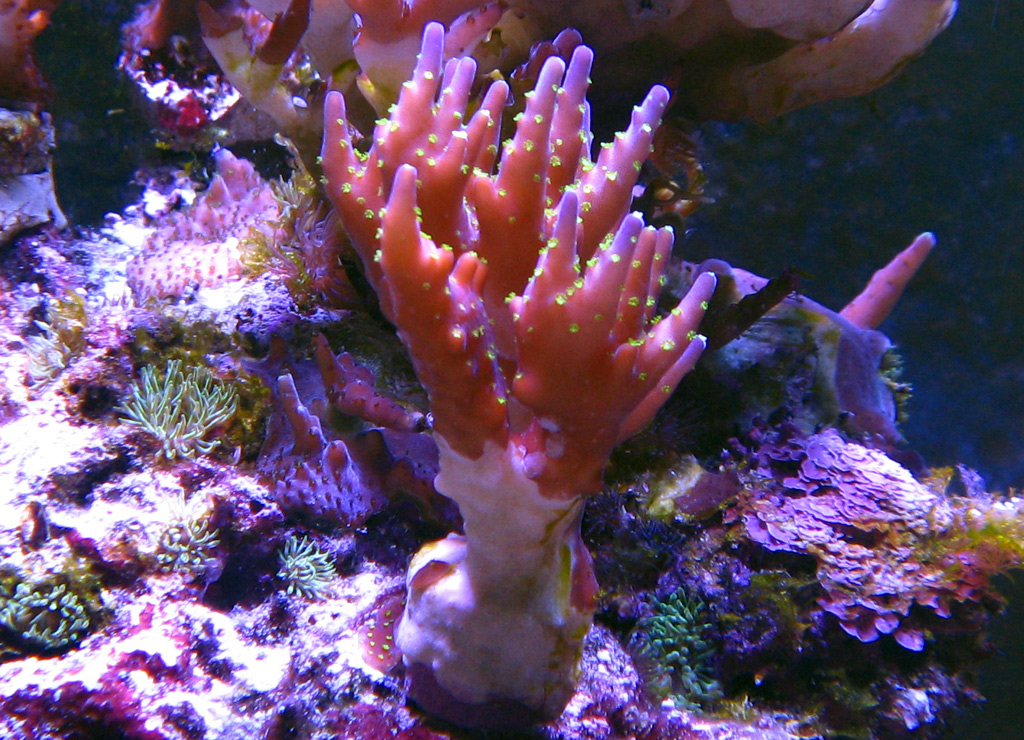 12,31,32 Septicemia occurs in 15% of patients with primary soft tissue infections and contributes to the high case-fatality rates. In those with bacteremia, the rate is 32%; without hematogenous involvement, the case fatality rate is only 1%.9
12,31,32 Septicemia occurs in 15% of patients with primary soft tissue infections and contributes to the high case-fatality rates. In those with bacteremia, the rate is 32%; without hematogenous involvement, the case fatality rate is only 1%.9
Secondary cellulitis in the setting of primary septicemia associated with Vibrio spp. carries a 32-50% mortality rate.4,9,10,19,33 In these cases, there is usually a preceding history of having eaten raw/undercooked oysters or other seafood ingestion.4,19 These individuals develop generalized, metastatic, macular, or papular lesions in the setting of primary bacteremia. Culture-positive cutaneous lesions have been reported with bacteremia caused by V. vulnificus, V. cholerae non-O1, V. parahaemolyticus, and rarely V. alginolyticus.4,34
Treatment of Coral-related
Soft Tissue Infection
Local wound care should include soap and water, followed by aggressive irrigation and debridement with saline solution and hydrogen peroxide to remove foreign material from the site and prevent secondary infection or granuloma formation.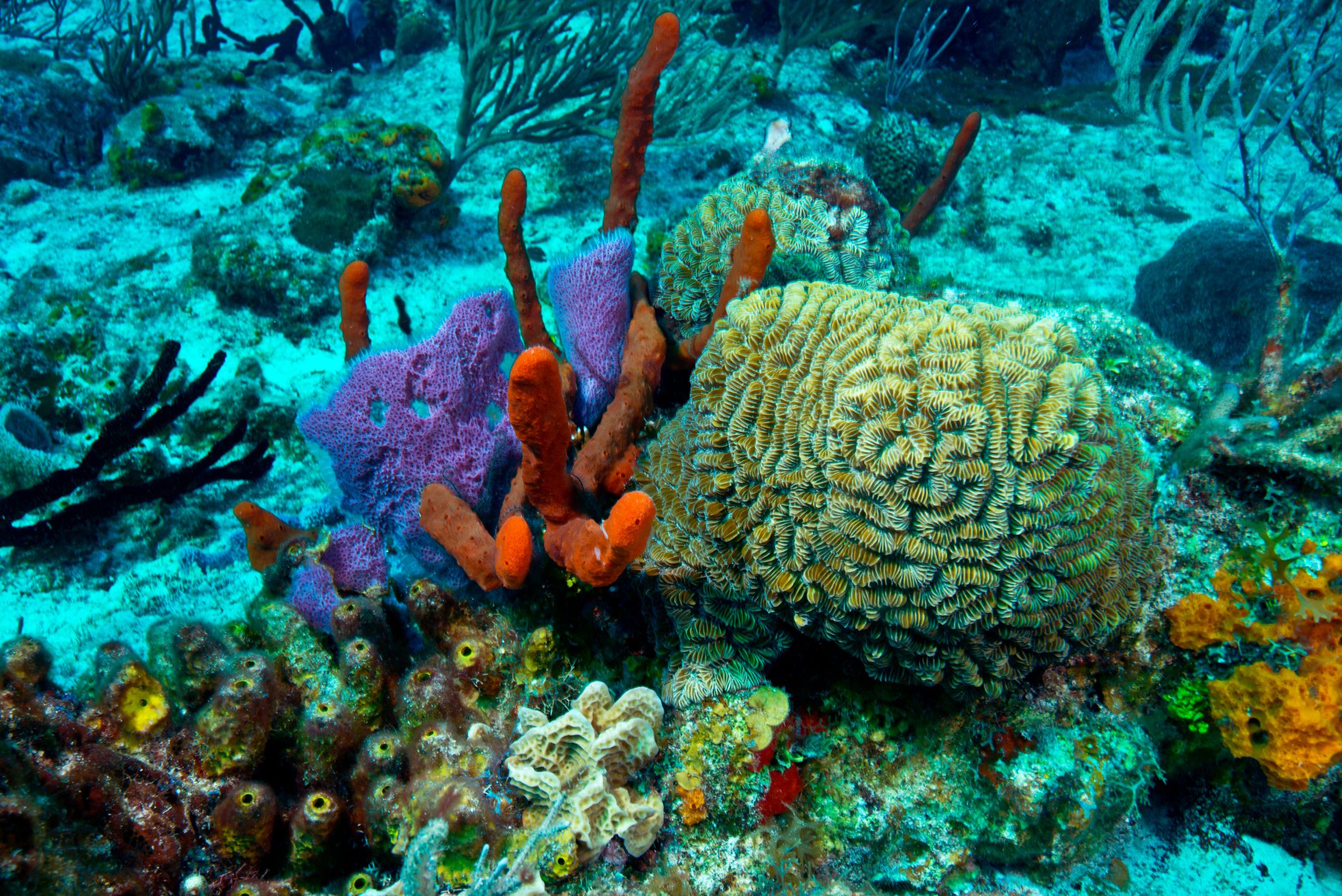 35
35
Given the potential polymicrobial nature of coral-related infections, broad-spectrum antibiotics should be considered. For those with obvious cellulitis, or as a prophylactic measure in those with abnormal immune systems, antibiotics with a spectrum of activity against staphylococci and streptococci should be used. In addition, antibiotics that are effective against halophilic Vibrio spp. should be administered.
Vibrio spp. frequently produce beta-lactamases and are often resistant to various beta-lactam antibiotics. The beta-lactam inhibitor, sulbactam, does not completely render these organisms susceptible to ampicillin. They are often resistant to cephalothin, cefuroxime, and cefoperazone, but sensitive to cefotaxime, ceftazidime, aztreonam, and imipenem.
Although the fluoroquinolones, ofloxacin and norfloxacin, are effective against these organisms, ciprofloxacin appears to have the greatest activity with an MIC90 of approximately 0. 25 mg/L. Trimethoprim/sulfamethoxazole is effective, as are the tetracyclines and chloramphenicol.36 For those with devitalized tissue or fasciitis, surgical intervention is indicated. This may be particularly important when dealing with infections caused by Vibrio damsela.16,21,37 (Dr. Ciampi is a Clinical Instructor in Medicine at Yale University and Dr. Sofair is an Assistant Clinical Professor of Medicine at Yale University with the Emerging Pathogens Program, New Haven, Conn.)
25 mg/L. Trimethoprim/sulfamethoxazole is effective, as are the tetracyclines and chloramphenicol.36 For those with devitalized tissue or fasciitis, surgical intervention is indicated. This may be particularly important when dealing with infections caused by Vibrio damsela.16,21,37 (Dr. Ciampi is a Clinical Instructor in Medicine at Yale University and Dr. Sofair is an Assistant Clinical Professor of Medicine at Yale University with the Emerging Pathogens Program, New Haven, Conn.)
References
1. Patterson TF, et al. Vibrio alginolyticus cellulitis following coral injury. Yale J Biol Med 1988;61:507-512.
2. Brown CK, Shepherd SM. Marine trauma, envenomations, and intoxications. Emerg Med Clin North Am 1992;10:385-408.
3. Habif TP, Habie TP. A color guide to diagnosis and therapy. Clin Dermatol 1996;3:2005.
4. Blake PA, et al. Disease caused by a marine vibrio.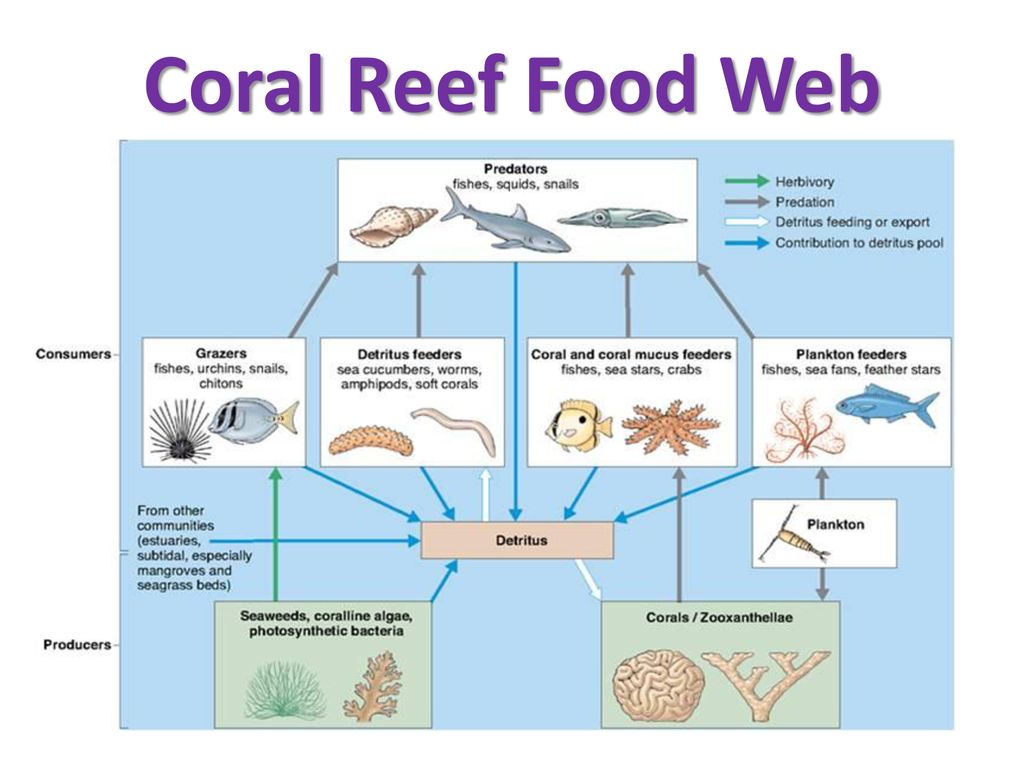
N Engl J Med 1979;300:1-5.
5. Morris JG, Black RE. Cholera and other vibrioses in the United States. N Engl J Med 1985;312:343-350.
6. Bateman JL, et al. Aeromonas hydrophilia cellulitis and wound infections caused by waterborne organisms. Heart Lung 1988;17:99-102.
7. Pien FD, et al. Bacterial flora of marine penetrating injuries. Diagn Microbiol Infect Dis 1983;1:229-232.
8. Kelly KA, et al. Spectrum of extraintestinal disease due to Aeromonas species in tropical Queensland, Australia. Clin Infect Dis 1993;16:574-579.
9. Hlady WG, Klontz KC. The epidemiology of vibrio
infections in Florida, 1981-1993. J Infect Dis 1996; 17:1176-1183.
10. Howard RJ, et al. Necrotizing soft-tissue infections caused by marine vibrios. Surgery 1985;98:126-130.
11. Limpert GH, Peacock JE Jr. Soft tissue infections due to noncholerae vibrios. Am Fam Physician 1988; 37:193-198.
12. Strom MS, Paranjpye RN. Epidemiology and pathogenesis of Vibrio vulnificus. Microbes and Infection 2000; 2:177-188.
13. Hill MK, Sanders CV. Localized and systemic infection due to Vibrio species. Infect Dis Clin North Am 1987;
1:687-707.
14. Oliver JD, et al. Distribution of Vibrio vulnificus and other lactose-fermenting vibrios in the marine environment. Appl Environ Microbiol 1983;45:985-998.
15. Linkous DA, Oliver JD. Pathogenesis of Vibrio vulnificus. FEMS Microbiol Lett 1999;174:207-214.
16. Yuen KY, et al. Fatal necrotizing fasciitis due to Vibrio damsela. Scand J Infect Dis 1993;25:659-661.
17. Penman AD, et al. Vibrio vulnificus wound infections from the Mississippi Gulf coastal waters: June to August 1993. South Med J 1995;88:531-533.
18. Joseph SW, et al. Vibrio parahaemolyticus and related halophilic vibrios. Crit Rev Microbiol 1982;10:77-124.
19. Klontz KC, et al. Syndromes of Vibrio vulnificus infections. Clinical and epidemiologic features in Florida cases, 1981-1987. Ann Intern Med 1988;109:318-323.
20. Howard RJ, Lieb S. Soft tissue infections caused by halophilic marine vibrios. Arch Surg 1988;123:
245-249.
21. Tang WM, Wong JW. Necrotizing fasciitis caused by Vibrio damsela. Orthopedics 1999;22:443-444.
22. Ien F, et al. Vibrio alginolyticus infections in Hawaii.
J Clin Microbiol 1977;5:670-672.
23. Porres JM, Fuchs LA. Isolation of Vibrio parahaemolyticus from a knee wound. Clin Orthop 1975; 106:245-247.
24. Johnston JM, et al. Vibrio vulnificus. Man and the sea. JAMA 1985;253:2850-2853.
25. Ho PL, et al. Necrotizing fasciitis due to Vibrio alginolyticus following an injury inflicted by a stingray. Scand J Infect Dis 1998;30:192-194.
26. Farina C, et al. Vibrio cholerae O2 as a cause of a skin lesion in a tourist returning from Tunisia. Journal of Travel Medicine 2000;7:92-94.
Journal of Travel Medicine 2000;7:92-94.
27. Brennt CE, et al. Growth of Vibrio vulnificus in serum from alcoholics: Association with high transferrin iron saturation. J Infect Dis 1991;164:1030-1032.
28. Stabellini N. Fatal sepsis from Vibrio vulnificus in a hemodialyzed patient. Nephron 1998;78:221-224.
29. Ali A, et al. Vibrio vulnificus sepsis in solid organ transplantation: A medical nemesis. J Heart Lung Transplant 1995;14:598-600.
30. Ko WC, et al. Infections due to non-O1 Vibrio cholerae in southern Taiwan: Predominance in cirrhotic patients. Clin Infect Dis 1998;4:774-780.
31. Hor LI, et al. Survival of Vibrio vulnificus in whole blood from patients with chronic liver diseases: Association with phagocytosis by neutrophils and serum ferritin levels. J Infect Dis 1999;179:275-278.
32. Bullen JJ, et al. Hemochromatosis, iron and septicemia caused by Vibrio vulnificus. Arch Intern Med 1991; 151:1606 -1609.
Arch Intern Med 1991; 151:1606 -1609.
33. Chuang YC, et al. Vibrio vulnificus infection in
Taiwan: Report of 28 cases and review of clinical manifestations and treatment. Clin Infect Dis 1992;15:
271-276.
34. Bonner JR, et al. Spectrum of Vibrio infections in a gulf coast community. Ann Intern Med 1983;99:
464-469.
35. Rosson Cl, Tolle SW. Management of marine stings and scrapes. West J Med 1989;150:97-100.
36. French GL, et al. Antimicrobial susceptibilities of halophilic vibrios. J Antimicrob Chemother 1989; 24:183-194.
37. Bia FJ. On damsels and distress from a vibrio species. Travel Medicine Advisor Update 2000;10:31-32.
How to treat Coral Cuts and Scrapes · Aussie Divers Phuket
Dealing with coral cuts and scrapes is a common part of scuba diving and here is some tips on how to treat them.
Although scuba divers do their best not touch coral, accident contact does occur. This can cause itching, burning sensations, pain and sometimes rashes. These injuries can take weeks, even months to heal.
This can cause itching, burning sensations, pain and sometimes rashes. These injuries can take weeks, even months to heal.
Here we will look at why this is so and what we can do to treat these injuries if they occur.
What is Happening in the Injury
Corals are covered by a soft layer of living tissues. The soft layer is situated on top of the hard layer of coral. When you cut yourself on some, the under hard layer does the cutting and the soft top layer matter remains in the cut itself. This matter is what inflames the wound and delays the healing process.
So long as that material remains in the wound it will have difficulty in healing. As your body is trying to remove the marine organisms you can get itchy rashes and small red bumps. These are unique to land based injuries and are often more difficult to treat.
Aussie Divers Phuket Best Scuba Boat Tom Turtle
How to Prevent Coral Injuries
Obviously try to avoid coral contact. If you are having regular issues they you should be increasing the distance between you and the coral. Wetsuits do assist as barrier between you and the coral. Ultimately, regular injuries may be due to poor diving techniques and it may be that you should have a professional look at your dive technique or look at does a course like the PADI Peak Performance Buoyancy course.
Wetsuits do assist as barrier between you and the coral. Ultimately, regular injuries may be due to poor diving techniques and it may be that you should have a professional look at your dive technique or look at does a course like the PADI Peak Performance Buoyancy course.
Are some coral more harmful?
The amount that you body reacts to the coral has to do with the amount of toxins in the coral, the size of the abrasion and where it is located. Also pre-existing sensitivity may contribute.
Corals such as Fire corals are cnidarians, so they contain nematocysts. Contacting them with a simple rub can cause mechanical activation and envenomation. The manifestation is usually blistering, which typically appears a few hours after contact.
How to Treat an Coral Injury
Clean and scrub the cut with soap and water. Continue to flush the wound with lots of water. You may need to repeat this.
Wash the wound with a 50% hydrogen peroxide/water solution and rinse thoroughly.
Continue this twice daily.
If the wound develops a a crusty outer, use wet-to-dry dressing changes. Put a dry sterile gauze pad over the wound and soak it with saline or a diluted antiseptic solution (such as 1% to 5% povidone-iodine in disinfected water). Allow it to dry then rip the bandage off the wound. The dead and dying tissue should adhere to the gauze and lift free. The tissue underneath should be pink and may bleed slightly but should be healing. Change the dressings once or twice a day. Use wet-to-dry dressings for a few days or until they become non-adherent. Then resume the regular wound dressing described above.
Inspect for any signs of infection: extreme redness, red streaks on the extremity, pain, fever, pus or swollen lymph glands. If this occurs, consult a doctor about starting an antibiotic. A possible Vibrio bacteria infection can cause illness and even death in someone with an impaired immune system (e.g., from AIDS, diabetes or chronic liver disease).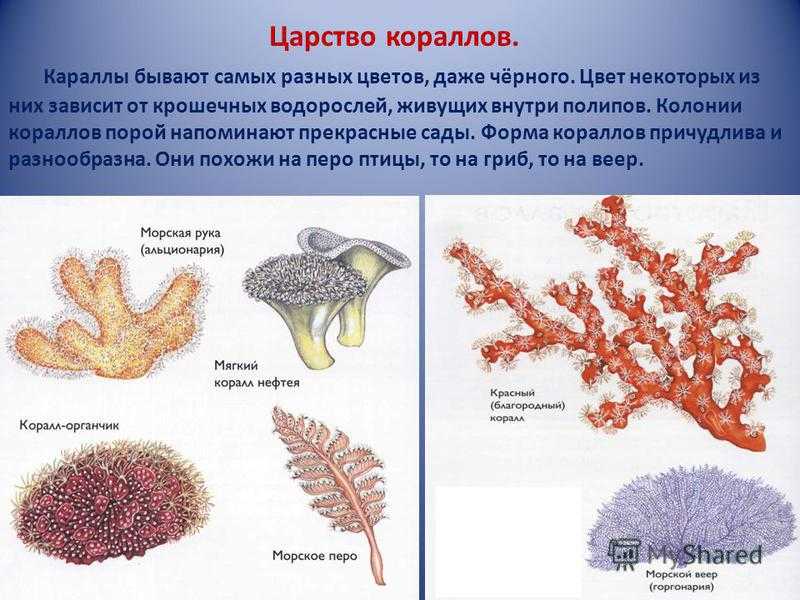
Continue to inspect for coral poisoning. If there continuing issues or doubt, contact your doctor immediately.
Happy Diver Racha Islands Scuba Diving Phuket
Continuing to dive
Always treat wounds seriously no matter how small they are. Even small wounds can get seriously infected and be detrimental to our health.
It is recommended that you let the wounds heal before continuing to dive.
As always, if you have continued issues or you are not sure please contact you medical practitioner. The cuts and scrapes should be taken seriously.
Read the full article here on the Divers Alert Network website.
By Darren Gaspari
Proud owner and active PADI Gold Course Director of Aussie Divers Phuket, a professional and awarded PADI 5 Star Instructor Development Scuba Diving Centre. Member of the PADI Advisory Board for the eLearning modules 2019 and 2020.
- Follow on: Facebook
- More by:
Darren Gaspari →
Posted in Diving Health on .
- Share
- Tweet
Contact Aussie Divers Phuket
hp
Name
Country
Country…—————AustraliaBrazilCanadaChinaGermanyIndiaJapanThailandUnited KingdomUnited States of America—————AfghanistanAlbaniaAlgeriaAmerican SamoaAndorraAngolaAnguillaAntigua & BarbudaArgentinaArmeniaArubaAustriaAzerbaijanBahamasBahrainBangladeshBarbadosBelarusBelgiumBelizeBeninBermudaBhutanBoliviaBonaireBosnia & HerzegovinaBotswanaBruneiBulgariaBurkina FasoBurundiCambodiaCameroonCanary IslandsCape VerdeCayman IslandsCentral African RepublicChadChannel IslandsChileChristmas IslandCocos IslandColombiaComorosCongoCook IslandsCosta RicaCote D’IvoireCroatiaCubaCuracaoCyprusCzech RepublicDenmarkDjiboutiDominicaDominican RepublicEast TimorEcuadorEgyptEl SalvadorEquatorial GuineaEritreaEstoniaEthiopiaFalkland IslandsFaroe IslandsFijiFinlandFranceFrench GuianaFrench PolynesiaFrench Southern TerGabonGambiaGeorgiaGhanaGibraltarGreat BritainGreeceGreenlandGrenadaGuadeloupeGuamGuatemalaGuineaGuyanaHaitiHawaiiHondurasHong KongHungaryIcelandIndonesiaIranIraqIrelandIsle of ManIsraelItalyJamaicaJordanKazakhstanKenyaKiribatiKorea NorthKorea SouthKuwaitKyrgyzstanLaosLatviaLebanonLesothoLiberiaLibyaLiechtensteinLithuaniaLuxembourgMacauMacedoniaMadagascarMalaysiaMalawiMaldivesMaliMaltaMarshall IslandsMartiniqueMauritaniaMauritiusMayotteMexicoMidway IslandsMoldovaMonacoMongoliaMontserratMoroccoMozambiqueMyanmarNambiaNauruNepalNetherland AntillesNetherlands (Holland, Europe)NevisNew CaledoniaNew ZealandNicaraguaNigerNigeriaNiueNorfolk IslandNorwayOmanPakistanPalau IslandPalestinePanamaPapua New GuineaParaguayPeruPhilippinesPitcairn IslandPolandPortugalPuerto RicoQatarRepublic of MontenegroRepublic of SerbiaReunionRomaniaRussiaRwandaSt BarthelemySt EustatiusSt HelenaSt Kitts-NevisSt LuciaSt MaartenSt Pierre & MiquelonSt Vincent & GrenadinesSaipanSamoaSamoa AmericanSan MarinoSao Tome & PrincipeSaudi ArabiaSenegalSerbiaSeychellesSierra LeoneSingaporeSlovakiaSloveniaSolomon IslandsSomaliaSouth AfricaSpainSri LankaSudanSurinameSwazilandSwedenSwitzerlandSyriaTahitiTaiwanTajikistanTanzaniaTogoTokelauTongaTrinidad & TobagoTunisiaTurkeyTurkmenistanTurks & Caicos IsTuvaluUgandaUkraineUnited Arab EmiratesUruguayUzbekistanVanuatuVatican City StateVenezuelaVietnamVirgin Islands (Brit)Virgin Islands (USA)Wake IslandWallis & Futana IsYemenZaireZambiaZimbabwe
Message
Contact Aussie Divers
Imagine a job where you have the opportunity to live and work in a vast range of warm tropical countries. Places such as Thailand, Fiji, the Caribbean, Mexico, Maldives and many more. You get to do what you love doing… scuba diving. Seeing the best the underwater world has to offer. Getting to meet people from many different countries. Get to wear shorts and flip flops to work each day and be free of the day-to-day grind of city. If you thi […]
Places such as Thailand, Fiji, the Caribbean, Mexico, Maldives and many more. You get to do what you love doing… scuba diving. Seeing the best the underwater world has to offer. Getting to meet people from many different countries. Get to wear shorts and flip flops to work each day and be free of the day-to-day grind of city. If you thi […]
Find Out More…
Having poor air consumption is not only frustrating for the diver involved, it is also frustrating for the diver’s buddy or dive group. Here are a few tips on how to improve your air consumption whilst scuba diving.
There is often as scuba diving safety rule in parts of the world (Thailand is one) when the first person is low on air then the whole group ends the dive. Therefore, if divers have paid good money to dive and the dive was […]
Find Out More…
Aussie Divers Phuket are now retailers for Silicone Gear medical grade silicone scuba diving mouthpieces. These super soft mouthpieces are made in the USA and are very very comfortable.
They come in a range of really cool colours and three different sizes, standard size, kids size and a larger long bite option.
All come with spare coloured cable ties.
If you do not own your own scuba diving regulator then at least own your own p […]
Find Out More…
what it is, causes and effects
Brett Monroe Garner / Getty Images
While corals provide habitat for a variety of marine life, coral bleaching can put these marine life at risk. Coral reefs cover less than 1% of the planet, but it is estimated that more than 1 billion people depend on coral reefs for food. When colored corals turn pure white, this sudden change is alarming. The white skeleton of the bleached coral is completely exposed, making the animal look dead. Although the bleached corals are still alive, their loss of color is a sign of extreme stress: the immobile animal’s desperate effort to survive. (1
What causes coral bleaching?
The brownish base color of healthy coral comes from tiny, plant-like animals known as zooxanthellae. Although each of these colorful inhabitants is less than 1 millimeter in size, over a million zooxanthellae usually live on each square centimeter of coral. Zooxanthellae congregate in transparent coral polyps where their combined color is visible to the outside world. However, the colors of zooxanthellae are simply a side effect of their main function towards corals: to provide them with food. (2, 3)
Although each of these colorful inhabitants is less than 1 millimeter in size, over a million zooxanthellae usually live on each square centimeter of coral. Zooxanthellae congregate in transparent coral polyps where their combined color is visible to the outside world. However, the colors of zooxanthellae are simply a side effect of their main function towards corals: to provide them with food. (2, 3)
Brent Durand / Getty Images
How algae feeds corals
Zooxanthellae are actually tiny bits of algae. Like plants and other algae, zooxanthellae capture energy from the sun through photosynthesis to produce food. Zooxanthellae capture light with chlorophyll, which also gives corals their brown tint. In exchange for the shelter and carbon dioxide that the coral provides, zooxanthellae share certain nutrients that are difficult for the coral to obtain on its own.
The amount of food a coral receives from its zooxanthellae varies greatly, with some coral species lacking these partnerships altogether. These independent corals must rely entirely on their polyps to catch food. Like tiny sea anemones, coral polyps use sticky tentacles to catch food passing by. Some corals use their tentacles during the day, but most tropical corals only expand their polyps at night. (4)
These independent corals must rely entirely on their polyps to catch food. Like tiny sea anemones, coral polyps use sticky tentacles to catch food passing by. Some corals use their tentacles during the day, but most tropical corals only expand their polyps at night. (4)
Corals that have evolved in partnership with zooxanthellae may have a competitive advantage over species with completely independent feeding strategies. Although coral abundance varies greatly between coral species, corals working with zooxanthellae can obtain up to 90% of their daily nutritional requirements directly from their photosynthetic tenants. Unfortunately, coral bleaching can turn this competitive advantage into a catastrophic weakness. (5)
Bleached corals do not have zooxanthellae
Bleached corals do not have colorful photosynthetic inhabitants, so the coral is left alone with its bare white skeleton and transparent polyps. Without zooxanthellae, a bleached coral must rely on its own tentacles for food.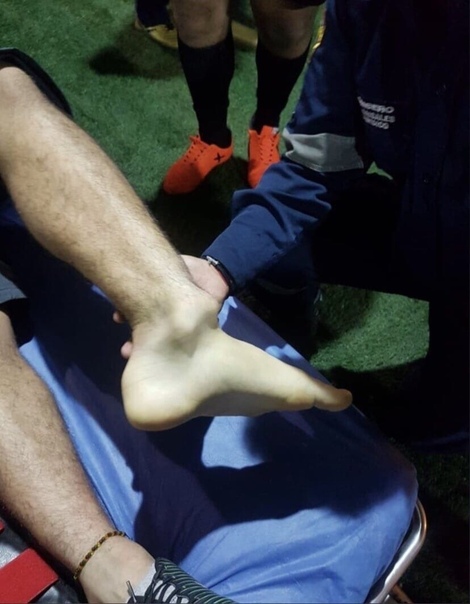 For corals that are used to making the most of their food, this can be quite manageable, but for corals that are usually closely related to their zooxanthellae, the loss of these photosynthetic allies not only robs them of a competitive advantage, it puts them at risk.
For corals that are used to making the most of their food, this can be quite manageable, but for corals that are usually closely related to their zooxanthellae, the loss of these photosynthetic allies not only robs them of a competitive advantage, it puts them at risk.
On the left, the coral polyps are full of zooxanthellae, giving the coral color. To the right, the coral is missing zooxanthellae, exposing a bright white coral skeleton. Brent Duran/Getty Images
The rift between a coral and its zooxanthellae is initiated by the coral when the animal is under extreme stress. Most often, this stress manifests itself in the form of abnormally warm water. Other known causes are declining seawater salinity, nutrient overload, excessive sun exposure, and even unusually cold water. (6, 7, 8, 9)
It is believed that these stressful situations cause serious damage to the zooxanthellae of the corals, preventing proper photosynthesis of the algae. Normally the coral digests damaged zooxanthellae, but when large areas of zooxanthellae are damaged at once, the coral cannot keep up with them.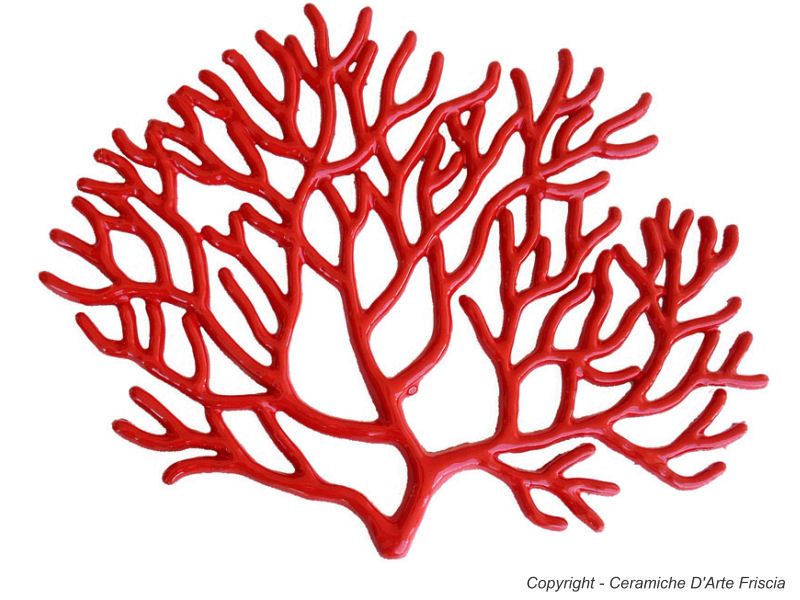 The build-up of non-functional zooxanthellae can cause damage to the coral itself, causing the coral to release its algal inhabitants in a desperate attempt at self-preservation. (6)
The build-up of non-functional zooxanthellae can cause damage to the coral itself, causing the coral to release its algal inhabitants in a desperate attempt at self-preservation. (6)
Close-up of coral polyps showing coral color. The color of corals is given by zooxanthellae. Ethan Daniels / Stocktrek Images / Getty Images
Heat stress is also thought to directly damage coral tissue. Under these stressful conditions, host corals are also known to release seemingly healthy zooxanthellae.
The removal of these healthy food-producing algae can be an unintended side effect of heat stress. In addition to damaging zooxanthellae, heat stress can cause a coral’s own tissues to lose control of its skeleton, causing the coral to lose its own cells with healthy zooxanthellae inside. Therefore, coral bleaching may be a symptom of stress rather than just a protective measure. (10)
The mechanisms of coral bleaching are not yet fully understood and may vary depending on the source of stress on the coral.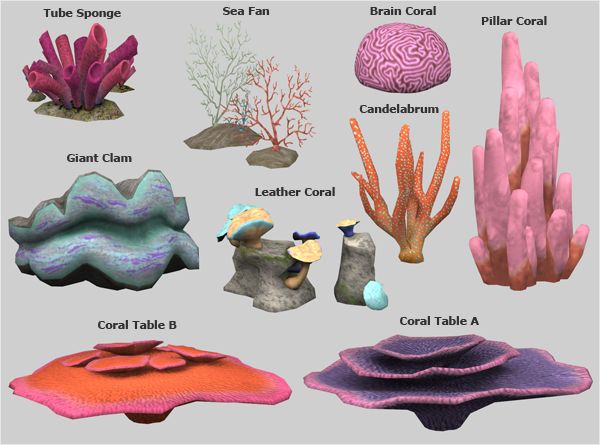 However, it is clear that coral turns pure white when times are tough. (11)
However, it is clear that coral turns pure white when times are tough. (11)
The far-reaching effects of coral bleaching
Coral bleaching not only harms the corals themselves, but also greatly affects the fish that depend on them for food or shelter. In fact, almost a quarter of all known fish species live among coral reefs. Many studies have documented the loss of abundance and diversity of reef fish as a result of coral bleaching. (12)
Fish that primarily or exclusively feed on corals are thought to be the most susceptible to coral bleaching, while fish with broad feeding habits have actually been found to increase in numbers in the years following a mass bleaching event. It is believed that coral-dwelling fish bear the brunt of the coral stress response as these fish become more susceptible to predation. Similarly, various types of crabs and other marine animals living in a coral structure experience an immediate and severe decline during bleaching. (13, 14, 15)
The devastating effects of coral bleaching extend to humans as coral reefs are considered major food sources.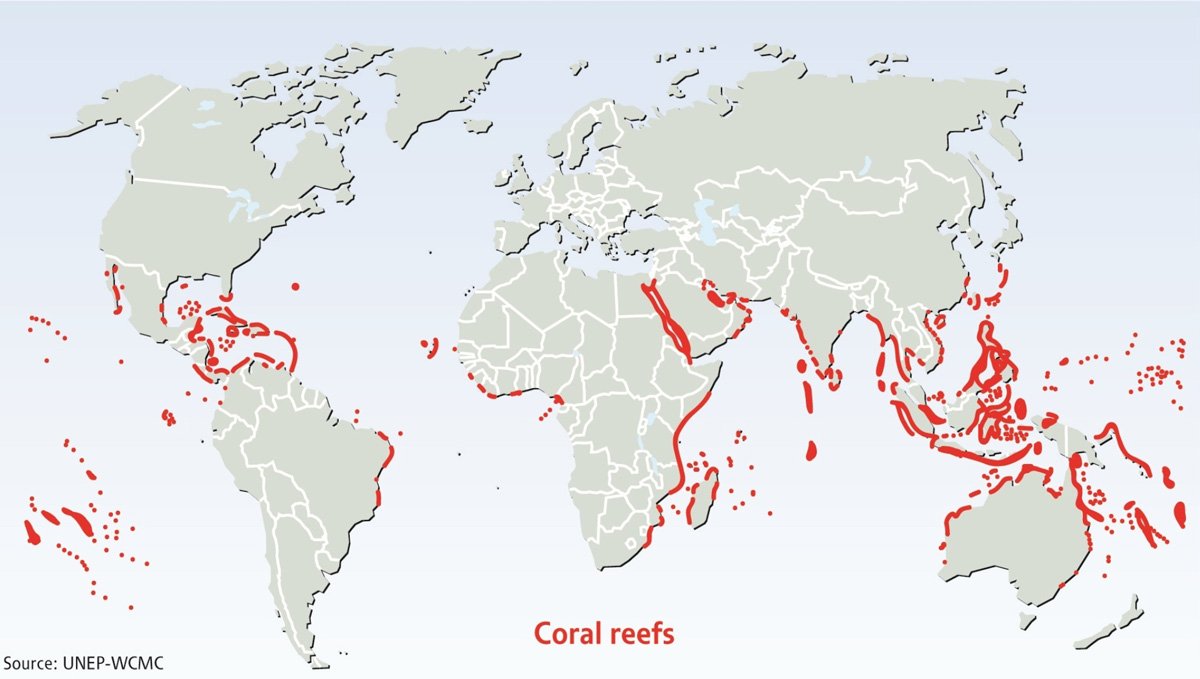 Coral reef tourism is an estimated $36 billion industry on which many economies are built. The complex three-dimensional structure created by the corals also protects adjacent coastlines by softening the impact of incoming waves. When coral reefs bleach, these benefits are greatly diminished. The bleached reef has fewer fish available for consumption. Likewise, a reef devoid of world-famous colors and diverse marine life is hitting the tourism industry. (16, 17)
Coral reef tourism is an estimated $36 billion industry on which many economies are built. The complex three-dimensional structure created by the corals also protects adjacent coastlines by softening the impact of incoming waves. When coral reefs bleach, these benefits are greatly diminished. The bleached reef has fewer fish available for consumption. Likewise, a reef devoid of world-famous colors and diverse marine life is hitting the tourism industry. (16, 17)
Can coral reefs recover?
Coral bleaching was first reported in the 1970s. It has since become a common occurrence in the world’s coral reefs and is often associated with massive coral deaths. (18)
When the coral dies, the algae take over the remains of the animal’s skeleton. Cherdchanok Treevanchai / Getty Images
Fortunately, there are signs of hope. By analyzing coral bleaching data, the researchers found that the onset of coral bleaching occurs at warmer temperatures than in previous years.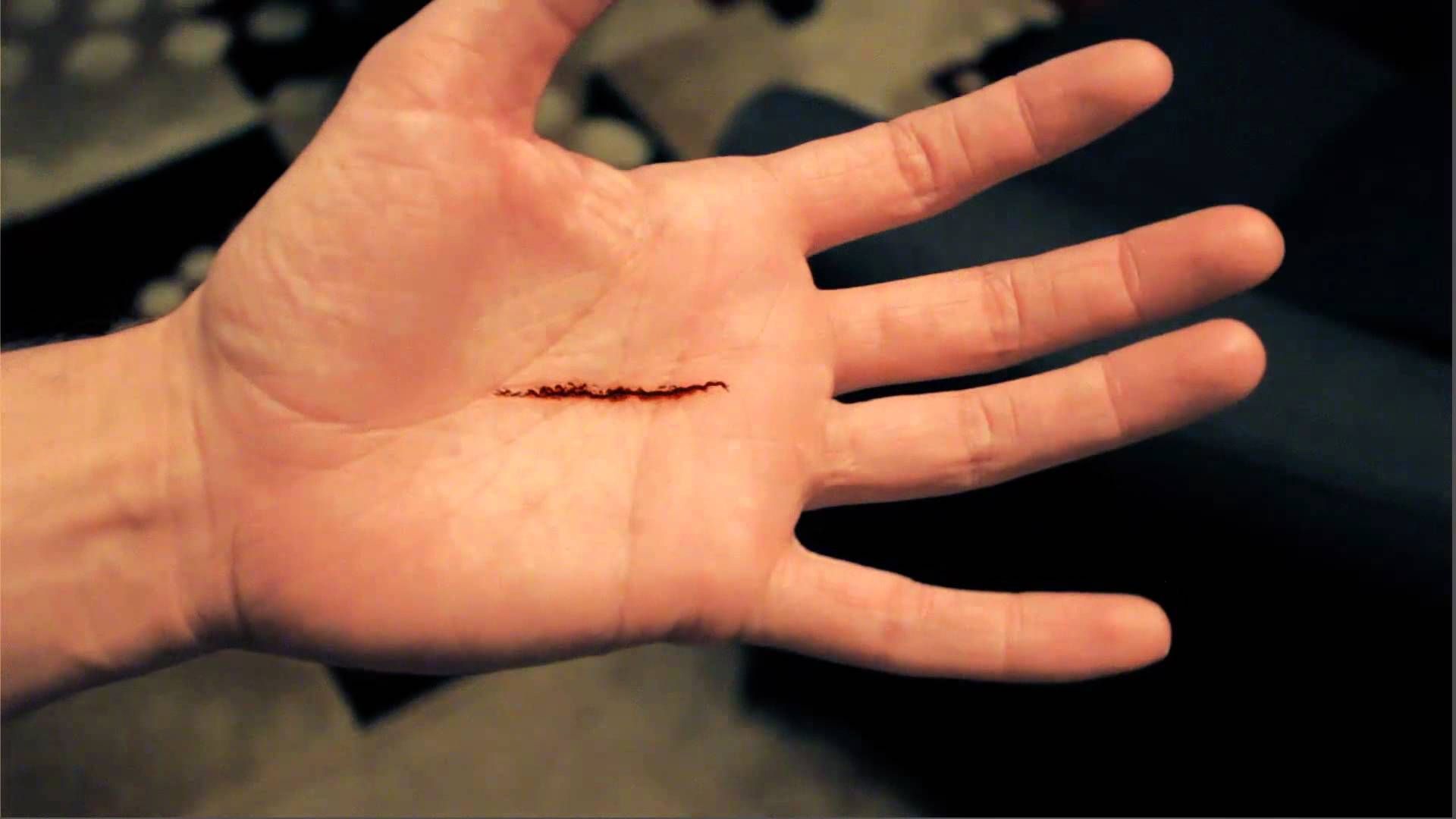 Scientists interpret this as a sign that some corals are adapting to climate change. (19)
Scientists interpret this as a sign that some corals are adapting to climate change. (19)
Scientists have also found areas of coral that have already adapted to extremely warm waters, including mangrove corals on the Great Barrier Reef. These corals already live in extreme environments, which puts them at the forefront when it comes to adapting to rising ocean temperatures. It is hoped that pre-adapted, heat-tolerant corals like these can populate the coral reefs of the future if today’s main reef-building coral species cannot adapt quickly enough to climate change. (20)
However, the best course of action to ensure the longevity of the world’s coral reefs and the livelihoods of the many reef creatures that rely on these corals is to slow down the rate of change in the coral reef environment due to climate change. Corals can adapt, but only if they are given enough time to evolve before they are destroyed.
Treehugger
Anzhelika Konstantinova
Marine biologist, environmental regulator and science writer.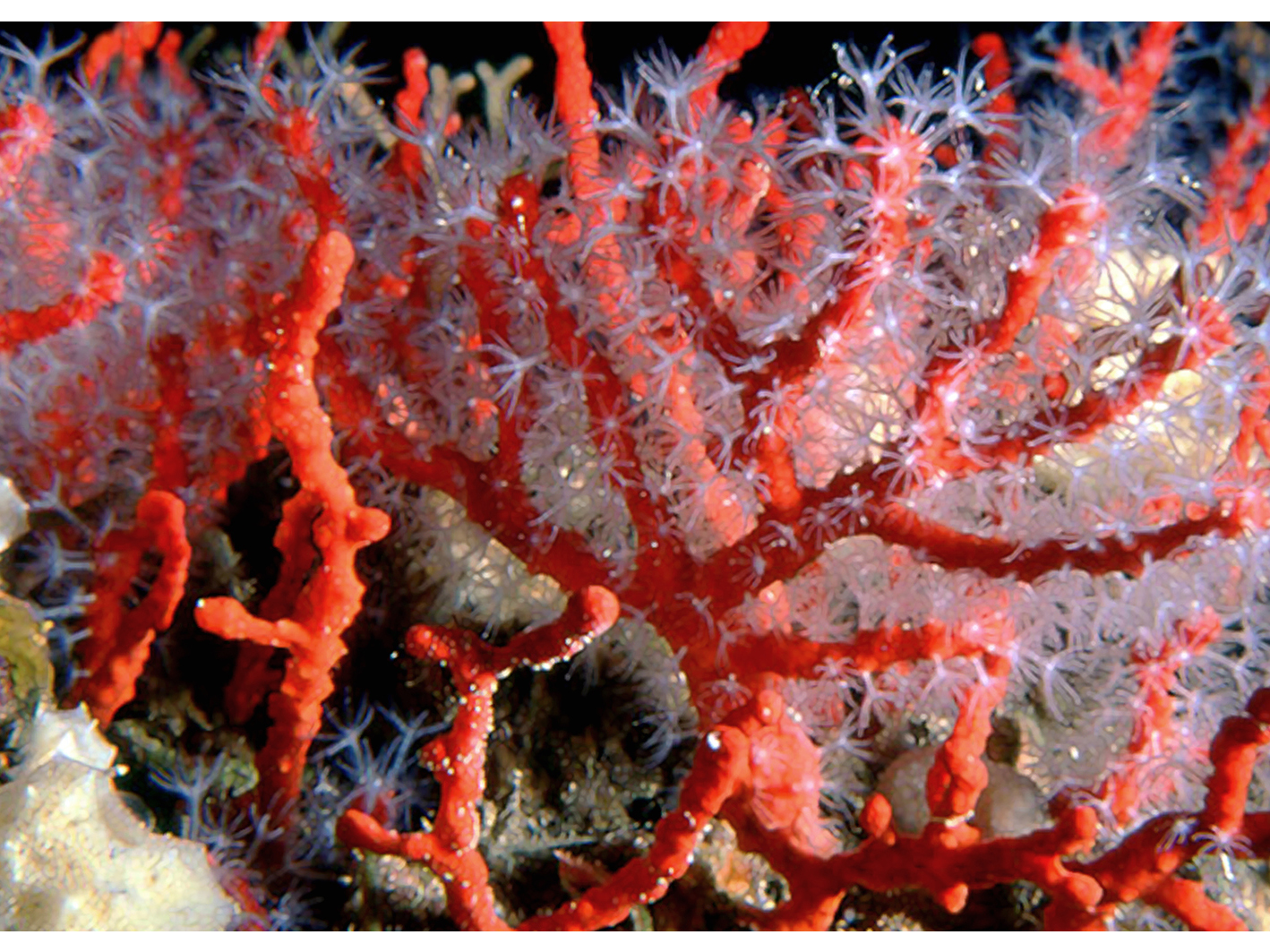 She previously studied Antarctic fish, algae and marine coastal ecology. Freelance author of the site “Knowledge is Light”.
She previously studied Antarctic fish, algae and marine coastal ecology. Freelance author of the site “Knowledge is Light”.
Why are coral reefs dying?
Beneath the ocean surface is a vast network of dynamic, skeletal invertebrates that contains at least 25 percent of all known marine species. Both hard and soft corals are the basis for the functioning of coral reefs, which are one of the most biologically diverse and valuable ecosystems on the planet. Coral reefs provide important cultural, economic, recreational and social benefits for hundreds of millions of people. They protect the coastline from storm damage and serve as a source of medicines. And they die.
Coral reefs are under continuous stress due to a variety of global and local issues, including climate change, deteriorating water quality, overfishing, pollution and unsustainable coastal development.
“Coral reefs are one of the most vulnerable ecosystems in the world to human damage,” says Gabriel Grimsditch, Marine Ecosystem Specialist at the United Nations Environment Program (UNEP). “They are particularly vulnerable to climate change and rising ocean temperatures, and the frequency and intensity of mass coral bleaching and coral death is predicted to increase as temperatures continue to rise.”
“They are particularly vulnerable to climate change and rising ocean temperatures, and the frequency and intensity of mass coral bleaching and coral death is predicted to increase as temperatures continue to rise.”
How are coral reefs dying?
When coral reefs are exposed to negative environmental factors, they displace microscopic symbiotic algae – zooxanthellae – from their tissues. Since this is their main food source, corals become more sensitive to environmental stresses and become pale or white, hence the term coral bleaching. To recover from bleaching, corals need to reabsorb zooxanthellae, which is only possible when environmental stresses are mitigated.
“The loss of fundamental species such as corals, which provide important habitat, could be devastating and indirectly affect the thousands of unique and wonderful species that call coral reefs their home,” Grimsditch says.
What is the state of the world’s coral reefs?
According to the findings of The State of the World’s Coral Reefs 2020 (quantitative analysis of world data for 1978-2019 prepared by UNEP in collaboration with the International Coral Reef Initiative (ICRI), the Global Coral Reef Monitoring Network (GCRMN) and various international partners), since 2009As of 2018, 14 percent of the world’s corals have been lost.
If drastic measures are not taken to limit global warming to 1.5°C, by 2050 the number of living corals on reefs could decrease by 70-90 percent. Even with rapid reductions in greenhouse gas emissions, it could take decades for global ocean temperatures to stabilize.
However, the report notes that “high coral cover and diversity” means that coral reefs are resilient and can recover if we protect the marine environment and create the right conditions to do so.
What can we do to save coral reefs?
To ensure the survival of coral reefs, policymakers need to take urgent action against climate change. First, the inclusion of coral reefs as a priority ecosystem in the post-2020 UN Convention on Biological Diversity will make governments, businesses and other stakeholders responsible for their conservation. After the UN climate change conference in Glasgow, policy makers must go beyond the goals of the Paris Agreement and ensure the future of coral reefs.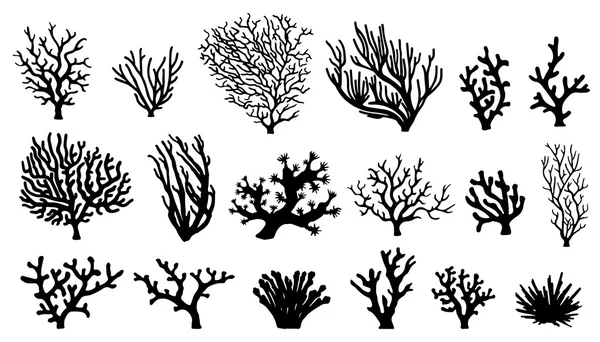
In the meantime, reducing local anthropogenic pressure through legislation, education and other means will contribute to reef resilience. “Combating climate change and reducing local threats must go hand in hand if we want coral reefs to survive so that future generations can enjoy and benefit from them,” says Grimsditch.
Coral Reef Monitoring and Restoration will help complement global efforts against climate change and other stresses. Photo: UNEP
How is UNEP addressing the health of coral reefs?
UNEP sets the environmental agenda and acts as the world’s leading environmentalist. She views the health of coral reefs through the lens of science, management, policy and finance.
Together with its partners, UNEP prepares important reports on the status of coral reefs regarding their recovery, bleaching forecasts, international politics, economic value and more to provide policymakers and the public with reliable information and advice.
